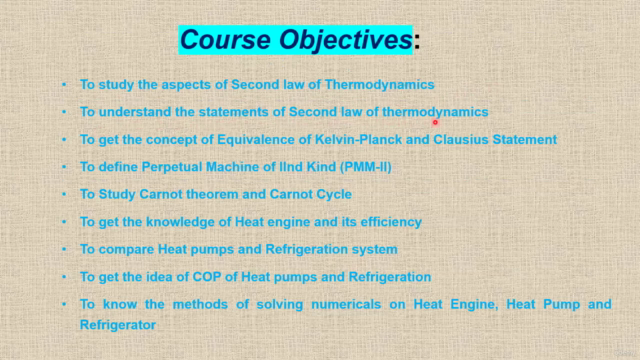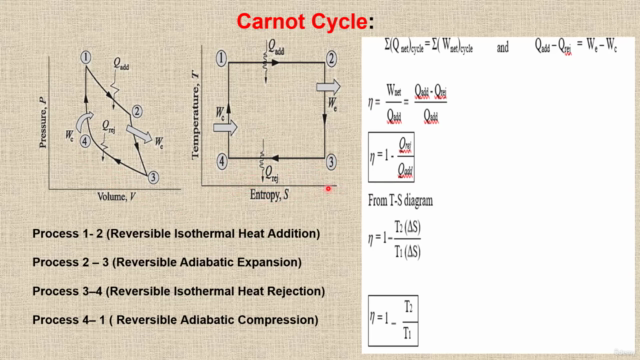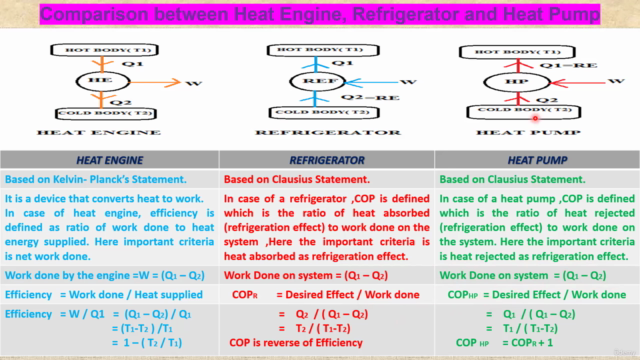Second Law of Thermodynamics
Heat Engine, Heat Pump and Refrigeration system
4.50 (2 reviews)

927
students
1.5 hours
content
Feb 2023
last update
FREE
regular price
Why take this course?
🌟 Master the Thermodynamics of Energy Systems! 🚀
📚 Course Contents as per Syllabus:
- ✅ Equivalence of Clausius and Kelvin-Planck Statement
- ✅ PMM I and II (Perpetual Machines of the First Kind)
- ✅ Concept of Reversibility and Irreversibility
🌍 Course Objectives:
- 🎓 Study the aspects of the Second Law of Thermodynamics
- 🧠 Understand the statements of the Second Law of Thermodynamics
- 🔀 Grasp the Equivalence of Kelvin-Planck and Clausius Statement
- 🤖 Define Perpetual Machine of the Second Kind (PMM-II)
- ⚛️ Study Carnot's Theorem and the Carnot Cycle
- 🏫 Get knowledge of Heat Engines and their efficiency
- 🔁 Compare Heat Pumps and Refrigeration Systems
- 📊 Understand the Coefficient of Performance (COP) for Heat Pumps and Refrigeration Systems
- 📚 Learn methods of solving numerical problems related to Heat Engines, Heat Pumps, and Refrigerators
Brief Description of Core Concepts:
Heat Engine 🔥
- Based on Kelvin-Planck’s Statement, a heat engine converts heat into work.
- Efficiency is the ratio of work done to heat energy supplied, with net work done being crucial.
- The efficiency formula: Efficiency = (W) / (Q1 – Q2), which simplifies to Efficiency = (T1 – T2) / T1 or 1 – (T2 / T1).
Refrigerator ❄️
- Based on Clausius Statement, a refrigerator’s coefficient of performance (COP) is the ratio of heat absorbed to work done on the system.
- COP formula: COP = Q2 / (Q1 – Q2), which simplifies to COP = T2 / (T1 – T2). Note that COP is the reverse of efficiency.
Heat Pump 🌡️
- Similar to a refrigerator, a heat pump operates on Clausius Statement, with COP being the key metric.
- COP formula: COP = Q1 / (Q1 – Q2), which simplifies to COP = T1 / (T1 – T2). The COP of a heat pump is simply the COP of a refrigerator plus one.
Course Outcomes:
- Gain a deeper understanding of the limitations of the First Law of Thermodynamics.
- Learn to compare between Kelvin and Clausius Statements.
- Understand various statements of the Second Law of Thermodynamics.
- Acquire a clear idea about both Kelvin and Clausius Statements.
- Explore Carnot's Theorem and the Carnot Cycle in detail.
- Grasp the working principles of Heat Engines, Heat Pumps, and Refrigerators.
- Calculate the efficiency of Heat Engines and the COP of heat pumps and refrigeration systems.
🎓 Join us to unlock the mysteries of energy conversion and master the principles that govern our modern world! 🌐
Course Gallery




Loading charts...
Related Topics
5178988
udemy ID
25/02/2023
course created date
03/03/2023
course indexed date
Bot
course submited by